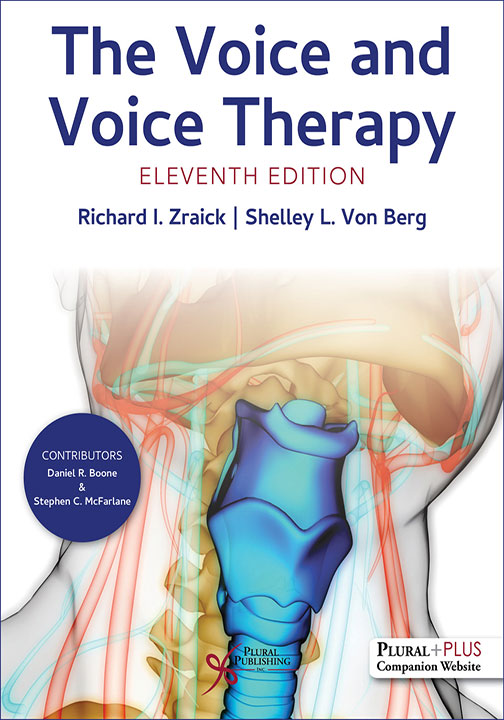
The Voice and Voice Therapy
Eleventh Edition
Richard I. Zraick, Shelley L. Von Berg
Details: 467 pages, Full Color, Hardcover, 8" x 10"
ISBN13: 978-1-63550-762-1
© 2026 | Available
For Instructors
Purchase
A Comprehensive, Evidence-Based Guide to Understanding and Managing Voice Disorders
Now published by Plural, The Voice and Voice Therapy, Eleventh Edition continues to be an indispensable resource on voice assessment and intervention, trusted for over five decades. This updated edition blends cutting-edge research, practical methodologies, and enhanced pedagogical tools, maintaining its accessibility to both undergraduate and graduate students. Covering a wide range of topics, the text delves into the biological, emotional, and linguistic functions of the larynx, along with detailed evaluations and management of specific voice disorders. Comprehensive descriptions of voice production anatomy and physiology are presented with detailed anatomical illustrations. The book provides in-depth discussions on voice and upper airway disorders, including those of a functional, organic and neurogenic nature. Special sections on voice therapy for diverse populations, such as school-age children, the elderly, professional voice users, and gender-diverse individuals, offer practical insights for students. The text includes videos demonstrating voice assessments, supportive studies, and various clinical approaches to voice therapy.
New to the Eleventh Edition
- 500+ new references from a variety of disciplines.
- New data on the incidence and prevalence of voice disorders, expanded discussions on classification, assessment approaches, and managing dysphonia.
- Expanded sections on excessive laryngeal muscle tension, psycho-emotional voice disorders, and evidence-based practices for treating functional dysphonia.
- Significant updates on gastroesophageal reflux diseases, endocrine changes, induced laryngeal obstruction, and juvenile recurrent respiratory papilloma, including the latest medical management strategies.
- The latest research on the behavioral, pharmacological, and surgical management of neurogenic voice disorders, with a focus on adductor laryngeal dystonia and Parkinson’s disease.
- Extensive updates on auditory-perceptual evaluation, voice-related quality of life assessments, and new case studies illustrating both instrumental and non-instrumental assessment techniques.
- Greater discussions on managing dysphonia in older adults, children, professional voice users, and gender-diverse individuals, with a focus on gender-affirming voice and communication therapy.
- More detailed coverage of medical management, evaluation, and therapy post-laryngectomy, with comprehensive discussions on communication options.
- In-depth discussion of disorders of nasal and oral resonance, with expanded content on the team management of cleft palate speech.
Key Features
- Evidence-Based Practice: Grounded in the latest research with over 1,200 references.
- Comprehensive descriptions of voice production anatomy and physiology are included with detailed anatomical illustrations.
- Voice Facilitating Approaches in table form detail when a particular approach is useful, list the sequence of therapy steps for that approach, and illustrate the outcome by presenting the approach with a particular client.
- Packed with Interactive Learning Tools:
- 25 Voice Facilitating Approaches detail when a particular approach is useful, list the sequence of therapy steps for that approach, and illustrate the outcome by presenting the approach with a particular client.
- Videos of master clinicians with real clients demonstrate voice assessments and the Voice Facilitating Approaches. These demonstrations enhance understanding and provide practical examples of techniques used in voice therapy.
- Self-Check quizzes, Clinical Sidebars, and end-of-chapter Preparing for the PRAXIS™ questions reinforce learning and provide immediate feedback.
- Guided Reading Exercises point readers to key clinical articles for deeper understanding.
- Clinical Concepts in select chapters provide practical guidance.
In this sample video from the companion website, glottal fry is used as a diagnostic probe.
PluralPlus Online Ancillaries
For instructors: PowerPoint Slides, Instructor's Manual (includes Test Bank, Student Practice Quizzes, and Case Studies), Videos
For students: Videos, Preparation for the Praxis Quizzes, eFlashcards, Laryngeal Pathology Images
Preface
Prologue
Acknowledgments
About the Authors
About the Contributors
List of Videos
Chapter 1. An Introduction to Voice Disorders and Their Management
The Biological Function of the Larynx
The Emotional Function of the Larynx
The Linguistic Function of the Voice
Prevalence of Voice Disorders in the General Population
Prevalence of Voice Disorders in Specific Populations
Management and Therapy for Voice Disorders
Summary
Chapter 2. Normal Voice: Anatomy and Physiology Throughout the Lifespan
Normal Aspects of Voice
Normal Processes of Voice Production
The Respiratory System
Structures of Respiration
Control of Breathing
The Respiratory Cycle (Inhalation and Exhalation)
Respiratory Volumes and Capacities
The Effects of Aging on the Respiratory System
Breathing for Life Versus Breathing for Speech
The Phonatory System
Anatomy of Phonation
Voice Production
Resonance
Structures of Resonance
Mechanism of Resonance
Summary
Chapter 3. Functional Voice Disorders
Excessive Muscle Tension Disorders
Benign Pathologies Resulting From Excessive Muscle Tension Disorders
Voice Characteristics With Excessive Muscle Tension Disorders
Psychogenic Voice Disorders
Summary
Chapter 4. Organic Voice Disorders
Congenital Abnormalities
Acid Reflux Disease
Vocal Fold Granulomas
Vocal Fold Cysts
The Endocrine System and Voice
Laryngeal Hemangioma
Leukoplakia and Hyperkeratosis
Laryngitis
Recurrent Respiratory Papillomatosis
Summary
Chapter 5. Neurogenic Voice Disorders
A Working View of the Nervous System
The Central Nervous System, the Cortex, and Its Projections
Neurotransmitters
The Brainstem and the Cerebellum
The Peripheral Nervous System
Conditions Leading to Neurogenic Dysphonia
Vocal Fold Paralysis
Spasmodic Dysphonia
Essential Voice Tremor
Differences Between Spasmodic Dysphonia, Essential Voice Tremor, and Muscle Tension Dysphonia
Parkinson’s Disease
Cerebrovascular Accident
Traumatic Brain Injury
Summary
Chapter 6. Evaluation of the Voice
Screening for Voice Disorders
Medical Evaluation of the Person With a Voice Disorder
Review of Auditory and Visual Status
Case History
Behavioral Observation
Auditory-Perceptual Ratings
The Oral-Peripheral Mechanism Examination
Visualization of the Larynx and Related Structures
The Clinical Voice Laboratory
Acoustic Analysis of the Voice
Analysis of Voice Dosage
Case Studies
Summary
References
Summary
Chapter 7. Voice Facilitating Approaches
Patient Compliance and Emerging Technologies in Voice Intervention
Voice Facilitating Approaches
Summary
Chapter 8. Therapy for Specific Patient Populations
Voice Therapy for Specific Populations
Voice Therapy for Respiratory-Based Voice Problems
Summary
Chapter 9. Management and Therapy Following Laryngeal Cancer
Types of Head and Neck Cancer
Risk Factors and Demographic Facts in Head and Neck Cancer
Modes of Cancer Treatment
Laryngeal Cancer Case Examples
Voice Facilitating Approaches
Vocal Hygiene
Laryngectomy
Tumor Staging
Surgical Advances and Organ Preservation Protocols
Preoperative Counseling
Postlaryngectomy Communication Options
The Artificial Larynx
Esophageal Speech
Tracheoesophageal Puncture
Overview of the Pharyngoesophageal Segment
Summary
Chapter 10. Resonance Disorders
Disorders of Nasal Resonance
Comprehensive Assessment of Nasal Resonance Disorders
Laboratory Instrumentation
Treatment of Nasal Resonance Disorders
Therapy for Oral-Pharyngeal Resonance Problems
Summary
References
Index
Laryngeal Image Gallery
The Voice and Voice Therapy, Eleventh Edition comes with access to supplementary student and instructor resources on a PluralPlus companion website.
The companion website is located at: https://www.pluralpublishing.com/publication/twt11e
STUDENTS:
To access the student resources, you must register on the companion website and log in using the access code located in the front of your textbook.
INSTRUCTORS:
To access the instructor resources, you must contact Plural Publishing, Inc. to be verified as an instructor and receive your access code.
Email: instructormaterials@pluralpublishing.com
Tel: 866-758-7251 (toll free) or 858-492-1555
*Note for students: If you have purchased this textbook used or have rented it, your access code will not work if it was already redeemed by the original buyer of the book. Plural Publishing does not offer replacement access codes for used or rented textbooks.
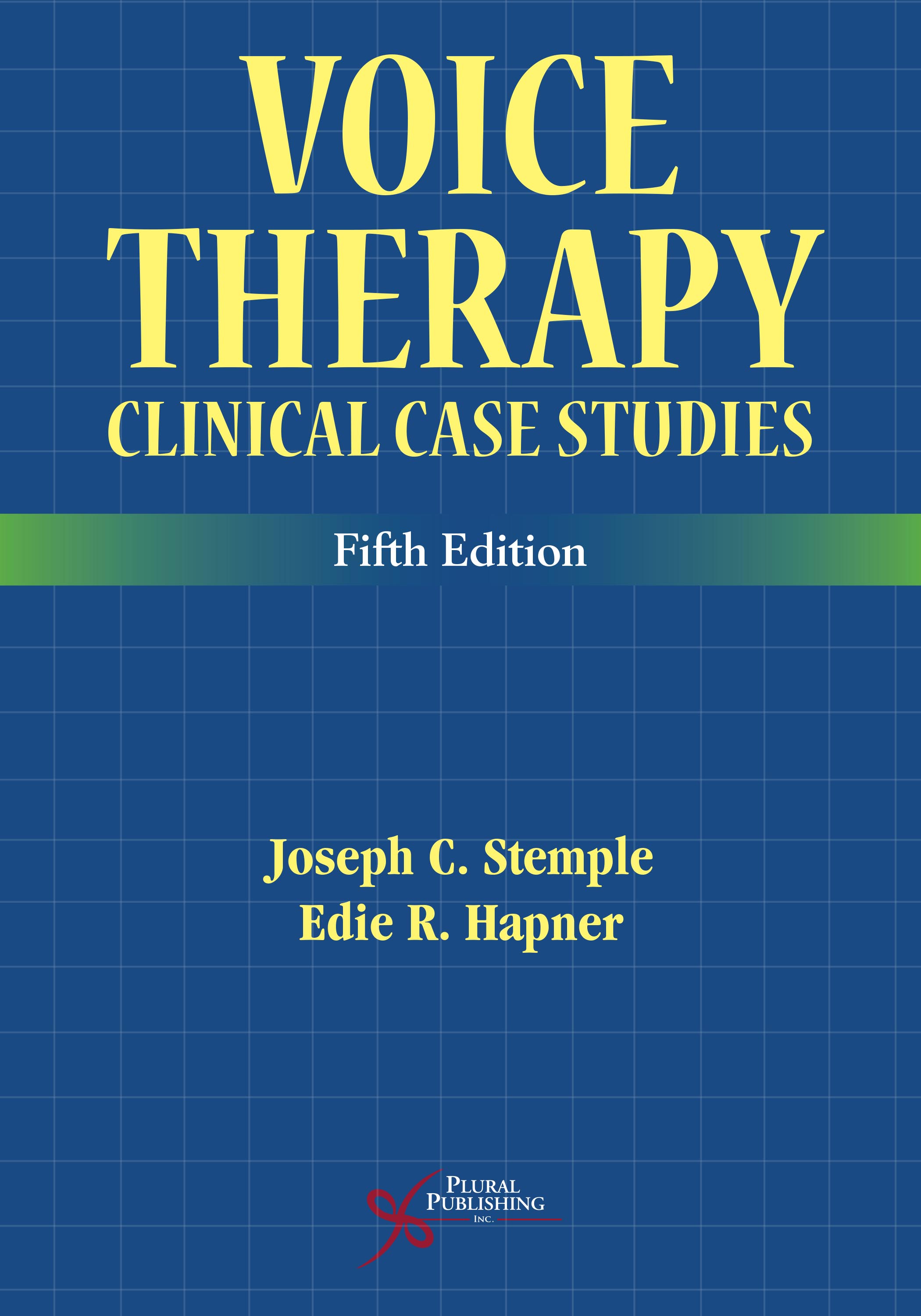
Voice Therapy: Clinical Case Studies.
Fifth Edition
Joseph C. Stemple, Edie R. Hapner
Details: 508 pages, B&W, Softcover, 7" x 10"
ISBN13: 978-1-63550-035-6
© 2019 | Available
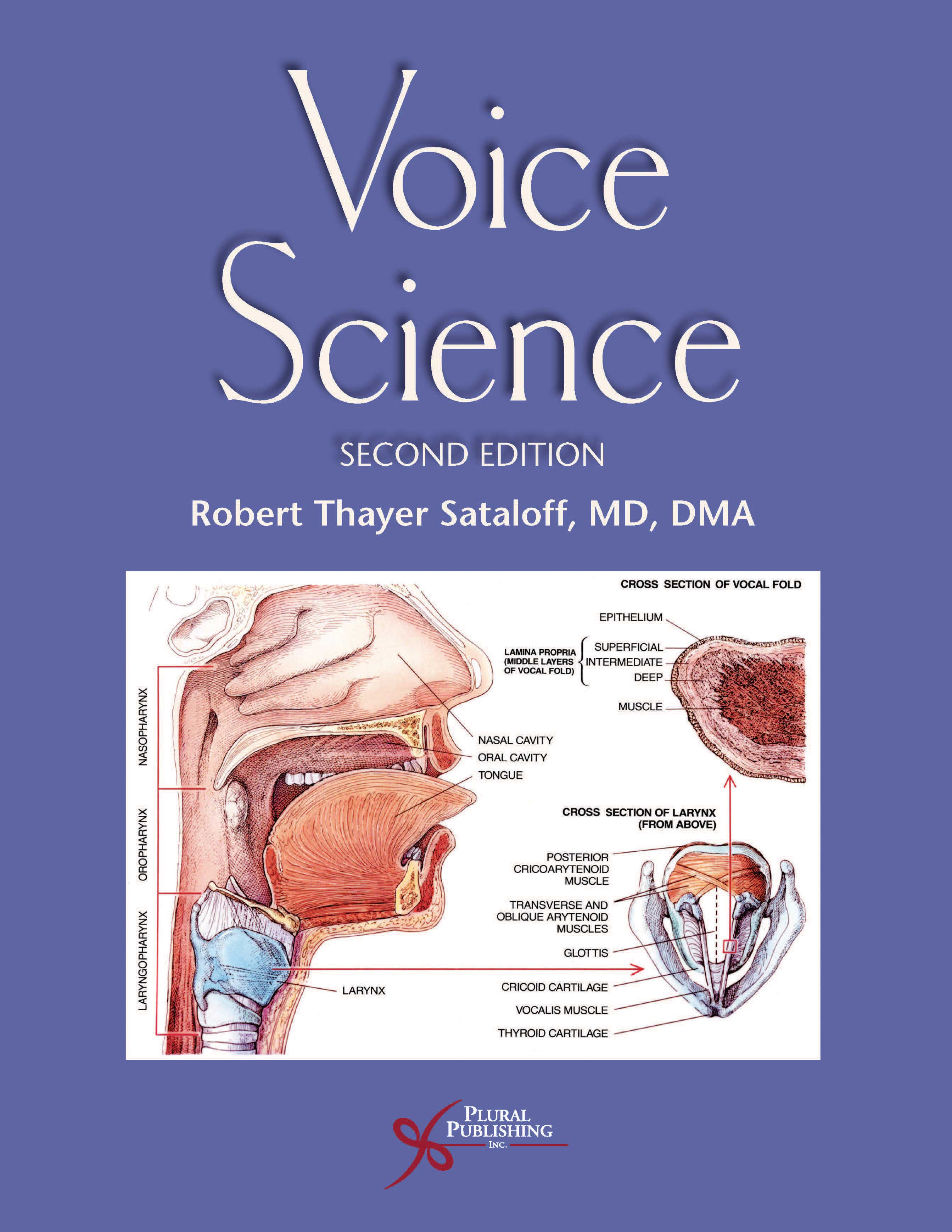
Voice Science
Second Edition
Robert T. Sataloff
Details: 347 pages, Full Color, Softcover, 8.5" x 11"
ISBN13: 978-1-59756-862-3
© 2017 | Available
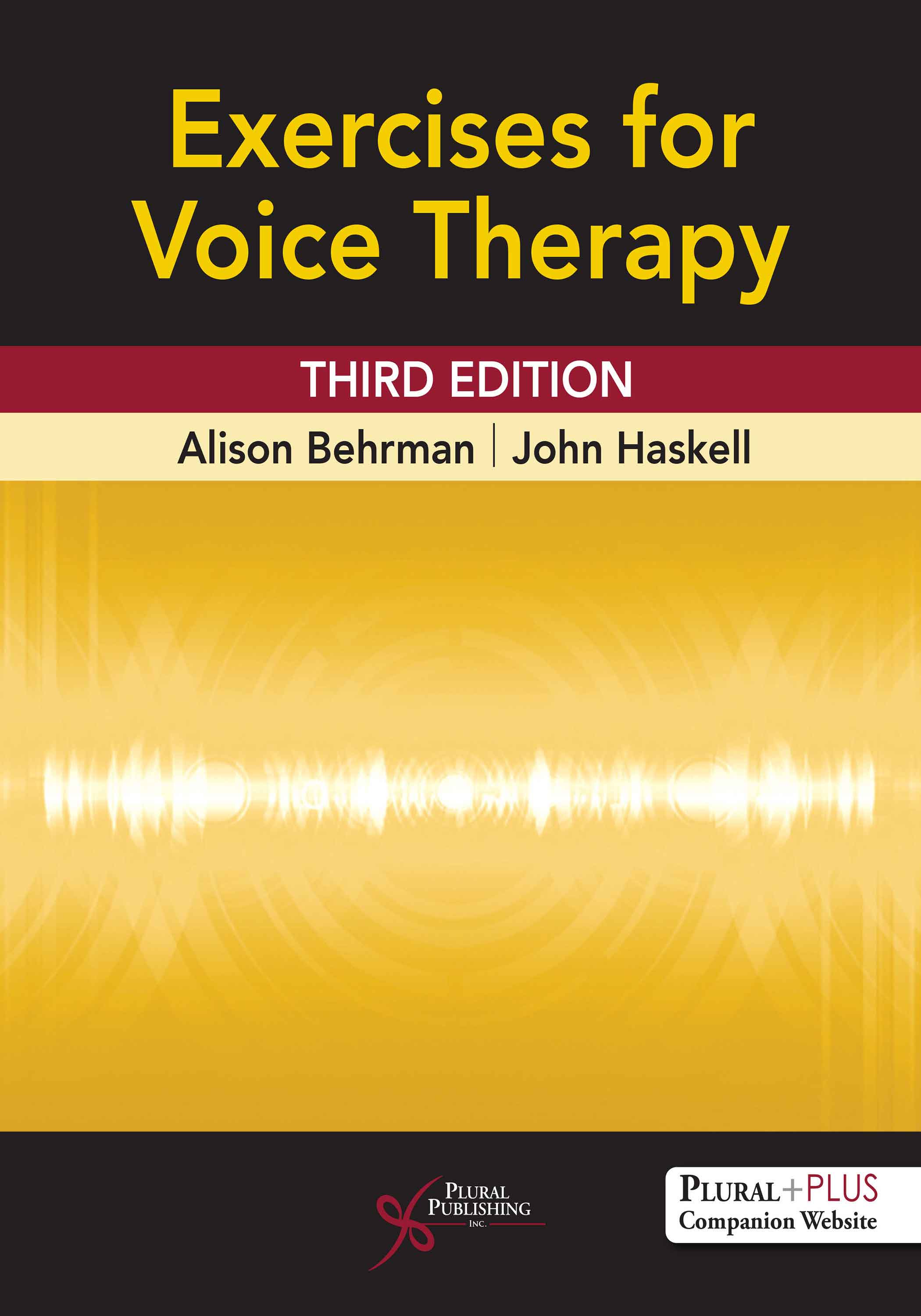
Exercises for Voice Therapy
Third Edition
Alison Behrman, John Haskell
Details: 289 pages, B&W, Softcover, 8.5" x 11"
ISBN13: 978-1-63550-183-4
© 2020 | Available
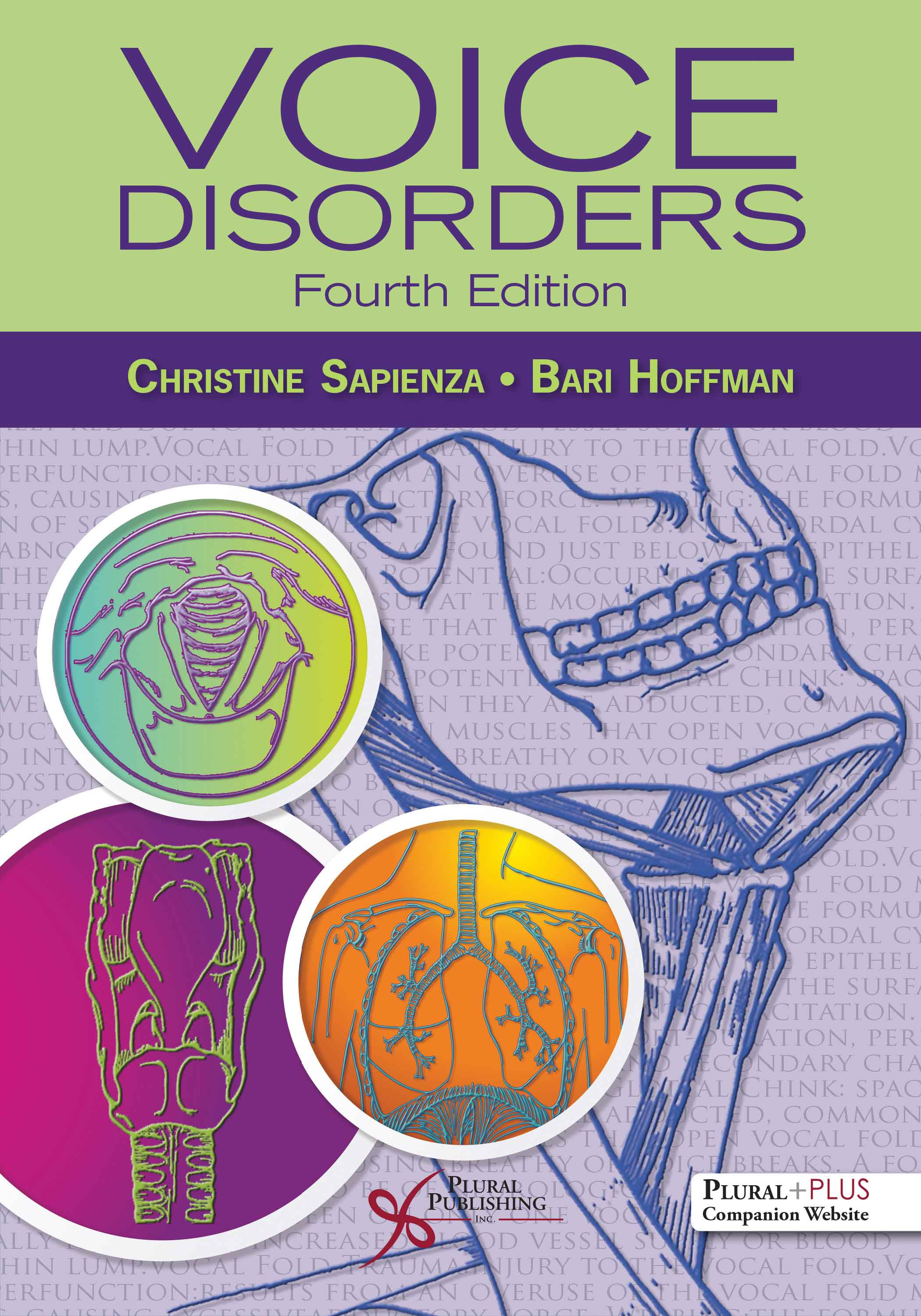
Voice Disorders
Fourth Edition
Christine Sapienza, Bari Hoffman
Details: 517 pages, Full Color, Softcover, 7" x 10"
ISBN13: 978-1-63550-251-0
© 2022 | Available
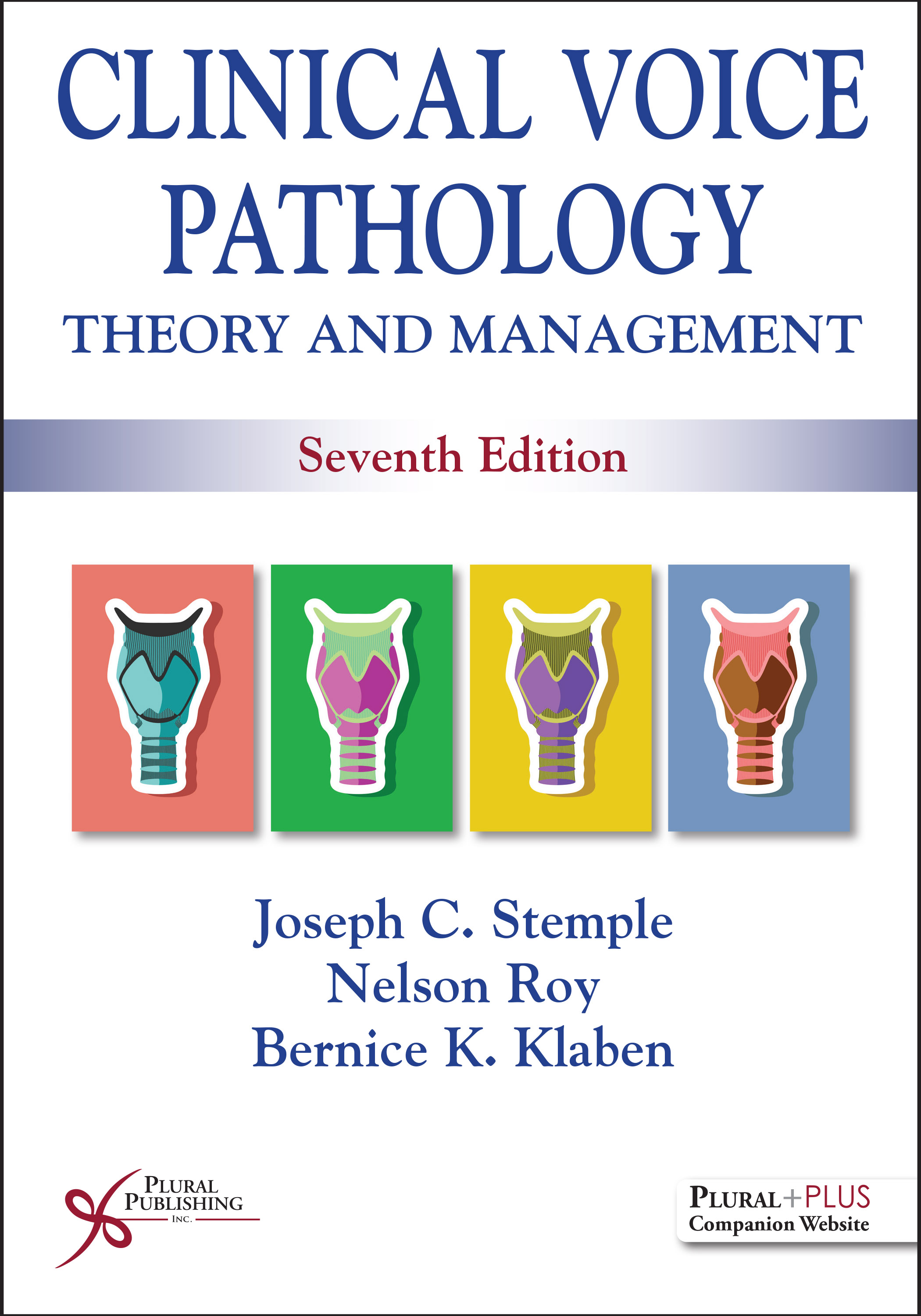
Clinical Voice Pathology: Theory and Management
Seventh Edition
Joseph C. Stemple, Nelson Roy, Bernice K. Klaben
Details: 644 pages, Full Color, Softcover, 7" x 10"
ISBN13: 978-1-63550-618-1
© 2026 | Available


